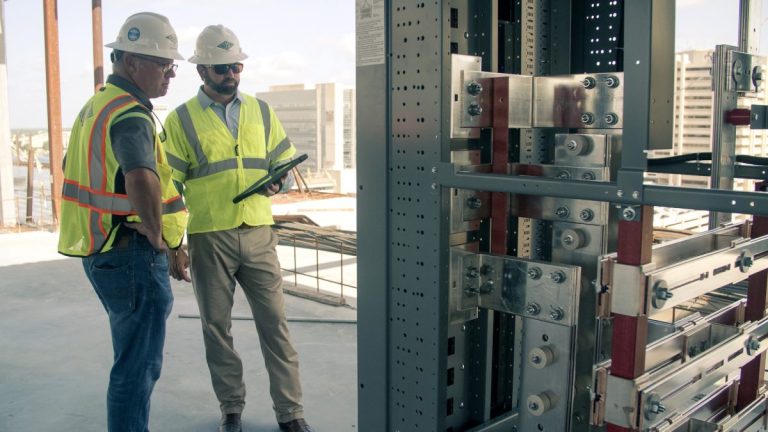You’ve probably noticed it by now, sustainability isn’t just a buzzword anymore. It’s more like that friend who shows up uninvited but ends up staying for dinner. Every industry is rethinking its impact, and yes, even the movie business is trying to clean up its act.
However, it’s not only about electric cars on set or banning plastic straws from the craft table. It’s about how we manage the spaces where the magic happens, studios, cinemas, production hubs, and even those pop-up red-carpet venues. And that’s where property managers come in.
Because, to be fair, sustainability sounds easier than it actually is. It’s not just “switch to LED lights and call it a day.” It’s a thousand tiny decisions, temperature settings, waste handling, energy audits, and figuring out what to do with all that leftover set material that somehow always ends up multiplying overnight
The Hidden Carbon Footprint of Movie Spaces
The film industry has a serious logistics problem. Between lighting rigs, sound equipment, air conditioning, and that one director who insists on “real fog,” energy consumption is off the charts.
Cinemas and studios are built like energy beasts. They’re designed to look and sound great, not necessarily to be green. The HVAC systems alone could probably power a small village (or at least a dozen food trucks).
That’s where smart property management steps in again. The modern property manager isn’t just dealing with leaks and maintenance schedules anymore. They’re looking at real-time energy data, installing motion sensors, and choosing suppliers who don’t secretly hate the planet.
And it’s paying off. According to Earnest Homes (source), sustainable upgrades in commercial properties can boost tenant satisfaction and lower long-term costs. In other words, being eco-conscious is no longer a financial burden; it’s a business advantage. A green win-win, if you will.
Studios Going Solar (and Other Bright Ideas)
A growing number of production studios are going solar, literally. From Los Angeles to London, solar panels are becoming part of the skyline.
The logic is simple. Studios need tons of power. The sun provides it for free. The math checks out.
Take Hawaii, for example. A place famous for both its cinematic landscapes and, well, its sunlight. Property managers there are encouraging local homeowners and business owners alike to tap into solar power. The reasoning applies just as much to studios and event venues.
The HiPacific PM Video Blog recently discussed why Hawaii homeowners should consider solar panels (read here). Their point? Lower bills, higher efficiency, and a smaller carbon footprint, something every film location scout would probably applaud.
And while not every city gets year-round sunshine, solar adoption is still climbing. Even cloudy places are realizing those panels don’t need perfect weather to make a difference.
Cinemas: The Great Energy Guzzlers of Entertainment
Let’s talk about movie theaters for a second. We love them, but they’re sustainability nightmares. Think about it: projectors, surround sound, popcorn machines, neon signs that run all night.
A typical multiplex can consume thousands of kilowatt-hours per day, especially during summer when air conditioning competes with blockbuster crowds.

Yet, the industry is slowly evolving. Smart lighting systems, compostable snack containers, and better insulation are becoming standard upgrades. Some cinemas even reward patrons who bike or use public transport with ticket discounts. (Imagine telling your Uber driver that.)
The Real MVP: Smart Property Management Systems
Now, let’s be honest. No single eco-friendly fix can transform the film industry overnight. But smart systems? They come pretty close.
We’re talking about AI-powered energy monitoring, automated water usage tracking, and digital building management that adjusts climate control based on occupancy. Yes, it sounds futuristic. And yes, it actually works.
A property manager with access to that kind of data can spot inefficiencies in real time. They can schedule equipment downtime, detect leaks before they become disasters, and reduce operational costs without sacrificing comfort.
And because sustainability often lives in the details, these tools make sure the small changes, like dimming lobby lights after screenings, add up to something real.
Green Sets and Conscious Events
It’s not just about permanent spaces. Film sets and temporary event venues are now being built with reuse in mind. Modular sets can be dismantled and reassembled elsewhere. Materials get recycled instead of being trashed. Even catering has gone greener, with reusable cutlery and food donation programs becoming more common.
It’s a cultural shift. Production teams are starting to realize that environmental responsibility isn’t just a PR talking point; it’s part of being a decent global citizen.
There’s also a certain irony in shooting a climate-change documentary while leaving mountains of waste behind. That’s the kind of plot twist we could do without.
Making It Personal (and Possible)
If you work in property, film, or even just love hanging around event venues, you might wonder, does this really make a difference?
It does. Every watt saved, every panel installed, every old AC unit swapped for a smarter one, it all counts. The ripple effect is real.
I think what’s most encouraging is how sustainability no longer feels optional. It’s slowly becoming part of the creative process. Filmmakers, producers, and yes, property managers, are realizing that caring for the environment is just another way of caring for the craft.
And while not every production can afford a net-zero studio or solar-powered lighting rig, small steps still count. Start with better waste management, local suppliers, and those not-so-glamorous but oh-so-important audits.
The show must go on, but it doesn’t have to burn through the planet’s resources while doing it.





